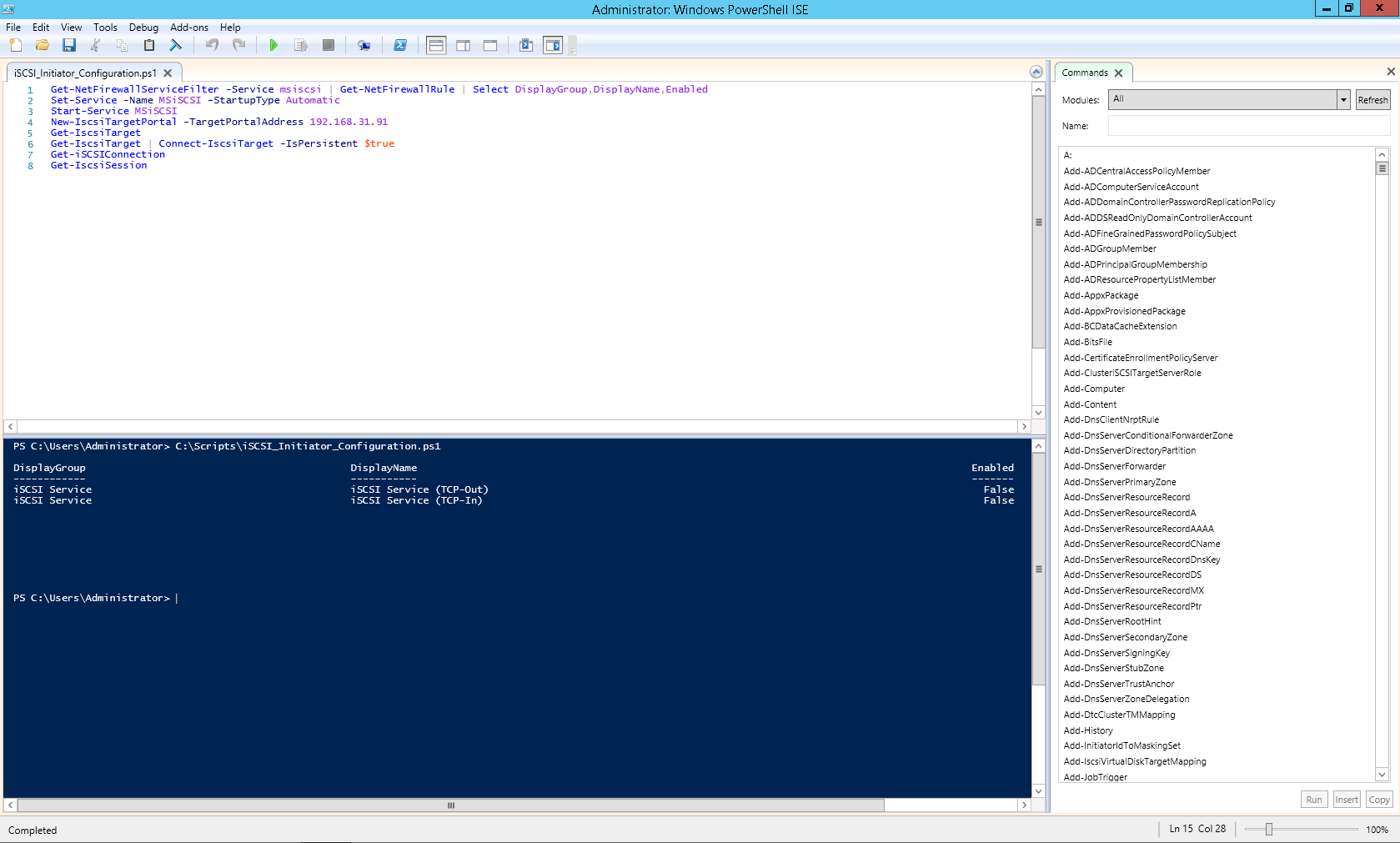You may use the following settings to configure a Microsoft Windows PowerShell script to run as an automated task in Task Scheduler. This is a very helpful feature for running scripts during the evening.
- General
- When running the task, use the following user account: DOMAIN\– USERNAME
- Run whether user is logged on or not
- Actions
- Start a program
- powershell.exe -file “<<<INSERT PATH TO SCRIPT>>>”
- Settings
- Allow task to be run on demand
- run task as soon as possible after a scheduled start is missed
- Stop the task if it runs longer than: 3 days
- If the running task does not end when requested, force it to stop
